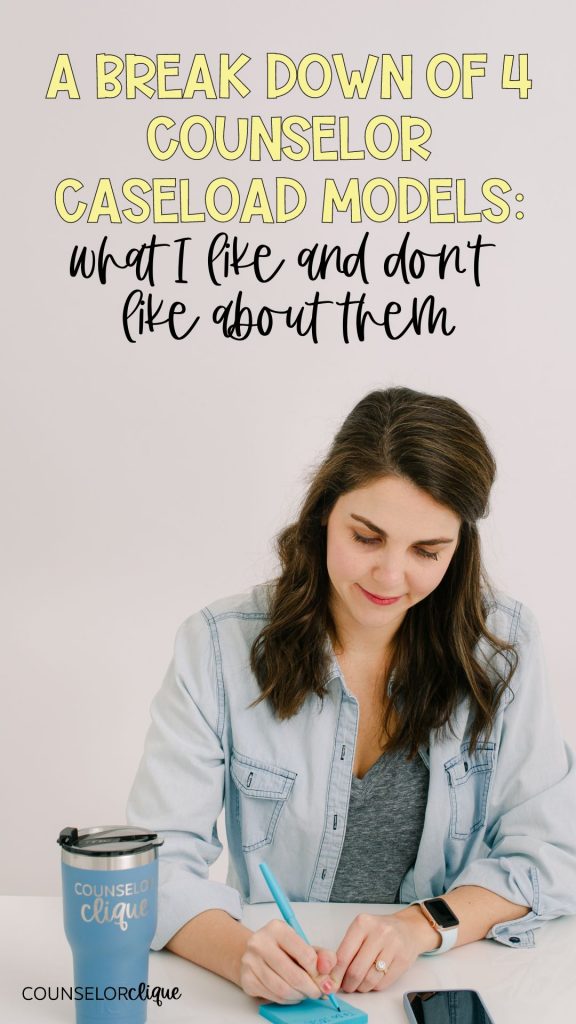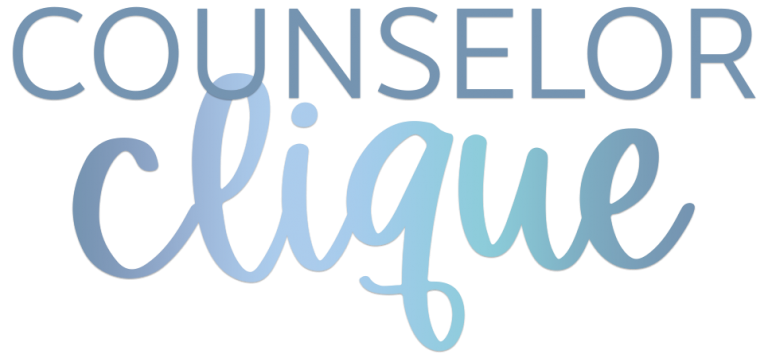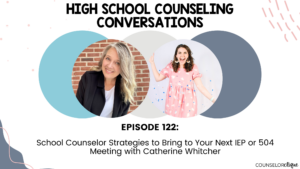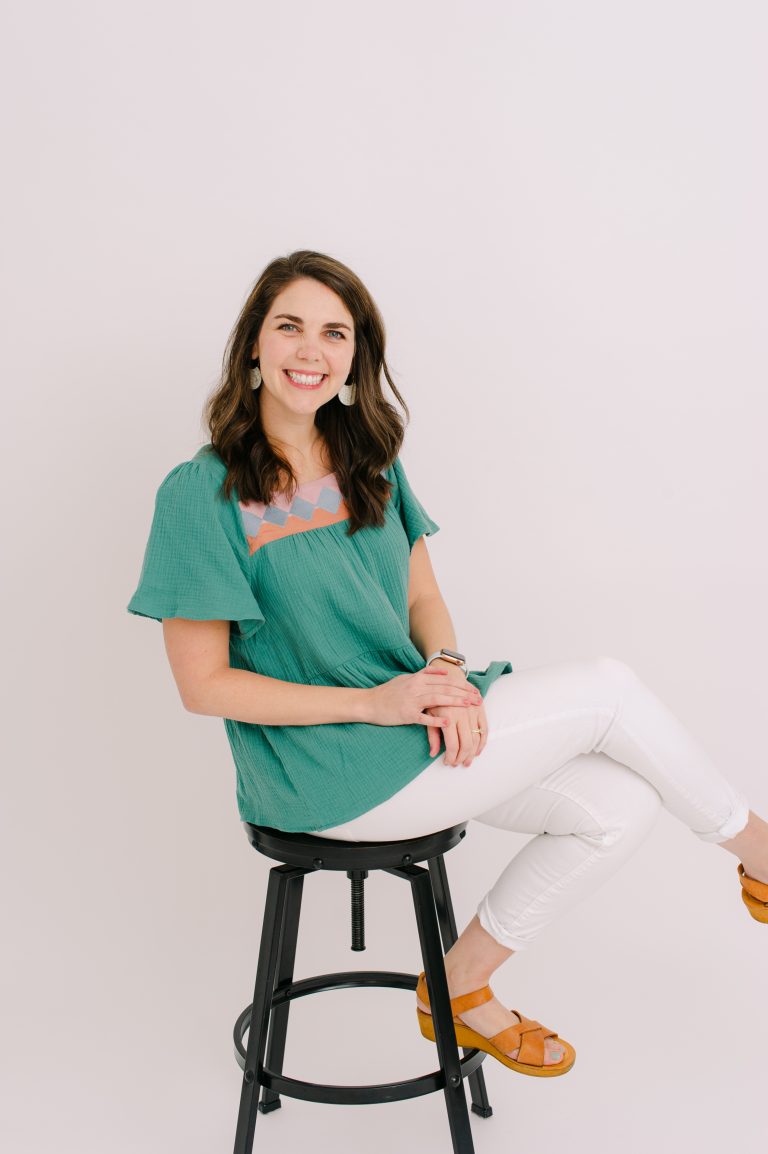When it comes to settling on a counselor caseload model that is best for your school, there are a lot of things to consider. I’ll be the first to admit, there is no one-size-fits-all model here. There are many variables at play such as school makeup, counselor skill sets, number of staff members, administrator caseloads, leadership styles, personalities, student needs… the list goes on. In my experience with multiple caseload models, I have found that certain systems are more effective than others. Read on to discover which counselor caseload models are tailored to best serve students and families.

1- The “grade-level exclusive” counselor caseload model
I’ll be honest with you, this is my least favorite model. In this counselor caseload model, everyone is assigned a grade level and stays within that grade level for the entire year. The benefit of this system is that you get really good at your one thing. In my opinion, however, there are more negative effects that we need to consider.
In the grade-level exclusive model, you’re responsible for remembering hundreds of names (a wearisome task, but I have some great pro tips here) only to launch them out into the next grade level. This leaves you feeling exhausted from your efforts without the time to really benefit from your labors. With a huge caseload like this, you work hard to establish relationships, only to have them ripped from your cold, tired hands at the end of the year. The model allows you to do one grade level well, but what really suffers are deeper, multi-year relationships that create space for students to grow and learn alongside a counselor who is truly invested in them.
Additionally, this model almost guarantees huge caseloads from now until eternity. If this is a system your school is stuck in, maybe because “this is the way we’ve always done it,” I want to encourage you to challenge the system and push the boundaries. Consider the benefits of an alternate model, outlined below (plus, more unfiltered thoughts on caseload models in this podcast episode).
2- The “floater” counselor caseload model
This counselor caseload model is born when you have enough counselors for each grade level with one or two extra counselor positions who have the freedom to “float” to support and cover various needs. This model can work, but it takes a lot of creativity, forethought, and clear communication to truly be successful.
I’ve seen firsthand that adding a “college and career counselor” to the senior counselor team can be an invaluable asset. There are many responsibilities within this grade level, so extra hands with applications or scholarship tasks can be a real difference-maker. Additionally, an extra person for follow-up on senior meetings for students who need a little extra TLC is critical. This also helps prevent burnout for senior counselors who carry the stress and pressure of senior student care year after year. (And for my senior counselors out there, a shameless plug for this podcast episode on running senior meetings like a boss.)
I’ve also worked on a team where I served as a counselor specializing in “off-grade level students.” I’ll admit, this job is equal parts rewarding and frustrating, but it goes without saying that these students take a lot of time, patience, and special care. Communication is key in this role because this counselor will work with all the grade-level counselors, tag teaming heavy caseloads to ensure student success. With the right organization, the payoff of this model can be magical.
3- The “roll ’til graduation” counselor caseload model
In this caseload model, you stay with a class and roll with them all the way through graduation. There are two versions to this one:
- Version A: The ninth-grade counselor always stays as the ninth-grade counselor while everyone else moves up with their students
- Version B: Everyone rolls all the way through
The biggest benefit of this model? RELATIONSHIPS! Three-to-four-year versus one-year relationships… there’s really no comparison. Not only do you build student relationships, but you build family and sibling relationships, too. Plus, fewer students “slip through the cracks” without the year-to-year pass-off to a new counselor.
Additionally, I could be a true advocate for my students with this model. I had the benefit of a more holistic understanding of a student’s situation, challenges, and strengths, allowing me to readily intervene on their behalf with administrators and teachers.
A downside to this counselor caseload model is when you match with a student “you’re stuck with them” which can be a pain point for the counselor and parents if the personalities don’t jive well. You’ll inevitably have people who will request a different counselor, which provides opportunities for problem-solving and honest communication. Nine times out of ten these requests are parent-driven, not student-driven, but in almost every situation, solutions can be found on a case-by-case basis.
Another con to this model is the large caseload sizes. Unfortunately, this model is not sustainable for counselor growth. It becomes difficult to add new counselors to the team in order to lessen caseloads.
4- The “alphabet breakdown” counselor caseload model
Drum roll please, for my personal favorite counselor caseload model… the alphabet model! This is where you divide students up by last names. Why is this so effective? You get the benefits of the relationships with students and families, while also (if you have more than four counselors) lowering caseloads. It’s the best of all worlds!
The greatest objection I received to this model was administrators and teachers not knowing immediately which counselor to send a student to. It can also pose challenges with grade-level administrators not having the ease of working alongside a grade-level counselor. (But it really isn’t anything a cheat sheet hanging in their classroom or next to their phone can’t overcome!)
In my experience, I had a supportive principal who was willing to take a risk in order to fight for stronger relationships and smaller caseloads for counselors to better serve students. We grew as counselors professionally and personally as we were challenged to work with students at multiple grade levels. It forced us to come together to work more effectively as a team.
We shared burdens together; we communicated more intentionally to divvy up responsibilities; we learned more about each other’s skills, interests, and strengths; we were pushed out of our comfort zones in directing classroom lessons. Were there growing pains? Absolutely. But I truly believe the benefits that pay out long term for relationships, burnout rate, and counselor strengths are invaluable.
I’d love to hear your thoughts and experiences with caseload models (send an email to [email protected]). Which model has benefitted your team the most? Share this post with your department head or someone on your school counseling team as you evaluate caseload models. Believe me when I say the discussion is worth it!
And as always, I’m your high school counselor fan girl inviting you to push boundaries and better your counseling programs. Be sure to get on my Clique Collaborative waitlist to join my membership when doors open twice each year. Plus, my TpT store has even more counseling resources you don’t want to miss (like this High School Counselor Planning Mega bundle). I’m here to make your life easier and more rewarding as a school counselor. We’re in this thing together!






